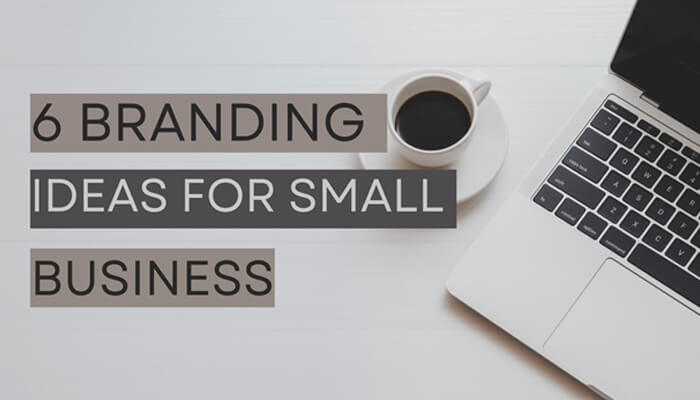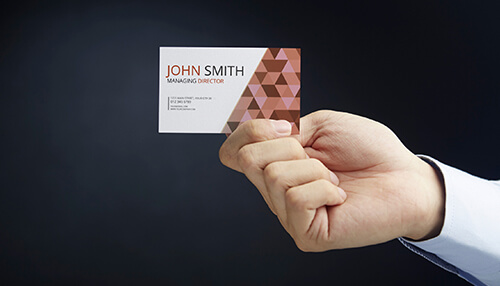As important as branding is for large businesses, it’s as critical for smaller ones. Retail shops, small online stores, or smaller B2B marketers need to increase product awareness through branding ideas that can help their clients identify the brand without putting in much effort. While smell and audio contribute to some extent, vision and touch should be your priorities when branding your small business.
Here are six branding ideas for small businesses that can help you increase engagement with your customers and build trust.
1. Branding Ideas for Signage for Physical Stores
Small business owners need to display their brand in signage because it is often the consumer’s first encounter with a physical store.
Even the shop name displayed over your entryway matters. It’s the best chance to make a strong first impression. You could also consider adding a 30′ flagpole made in USA to fly your business flag, improve the visibility of your outlet, and attract attention
Window displays are also included in the signage. Window displays not only draw customers in initially, but they also have an effect on their buying behaviour. Clients want to feel like they are visiting your world when they enter your business; thus, the brand identity at the entry has to be prominent.
Use a blackboard on the sidewalk in front as a unique and affordable approach to making a good first impression. Retailers can entice customers, particularly walkers who would not have even seen your window decorations.
If your branding is funny, use a joke. Put an inspirational quotation if your goals are lofty. If the sign is unusual enough, it may show up on Instagram, which would further publicise your identity.
Use signs inside the store to direct customers to the items they are looking for. Your shop space should have digital signs. This comprises displays, like screens and signage, that show consumers digital videos, advertisements, or other messages.
2. Corporate Branding Ideas
Business cards
Whether you’re in retail or sales, your reps require business cards to present your business to consumers and build your company’s credibility. Small businesses sometimes disregard the value of properly designed business cards from their best branding agencies.
Business cards that have been printed by a professional are often more robust and substantial. Additionally, because the purpose of a business card is to remind potential customers of your company, longevity is a highly desired quality.
Look forward to distributing as many business cards as you can to your potential clients. Make them accessible and visible in your office for anyone to take.
Folders and Binders
Leather binders are often used by businesses that require a lot of document handling. Custom-printed leather binders are popular among businesses that require:
- Presenting portfolios.
- Attending conferences.
- Collecting sales data.
- Holding brochures.
Custom leather binders have enough room in the front and back to imprint your logo on them. These professional binders offer a great opportunity for branding your small business. You can also hold business cards and flyers in smaller pockets.
Employee Merchandising
Your brand is personified by the sales and retail staff that work there. They are responsible for bringing the store and the branding to life. They must be regarded as a key element of the brand identity.
Train new hires thoroughly before letting them work. Help them get familiar with your brand identity by explaining what it entails and how they may embrace it. Bear this in mind while interviewing prospective new hires.
3. Branding Ideas to Design a Great Logo
Your logo is yet another key component of branding.
You’ll create a logo as part of the brand identification process that represents your company. The in-store experience must also incorporate that branding. That’s where a brand design firm comes in; they’ll help you create a logo that not only looks great but also represents everything your company stands for. Once you have that perfect logo, it’s time to incorporate it into every aspect of your business, including the in-store experience. From signage and displays to packaging and employee uniforms, every detail should reflect your branding message loud and clear.
Strong logos should serve as the foundation for a brand’s identity, but the entire campaign must function as a unit for it to be effective.
Add your logo to price tags, shopping bags, receipts, and other items.
However, keep in mind that you should balance brand placement throughout your in-store experience. It’s not just a question of sticking the logo in any available spot. It needs to be tactical.
A company, like Coach, for instance, uses the emblem in the creation of its products. Their retail spaces are designed simply, with lots of white space, vibrant lighting, and minimum branding. But the goods represent the brand.
Target, a discount store, on the other hand, has a more overt strategy to include its emblem in the shopping experience.
4. Branding Ideas to Build a Social Media Presence
The finest tool available now for establishing connections is social media. Not just between people but also between businesses and consumers.
By connecting, we mean forging genuine connections with your clients. Communicate with them. Discuss with them. The same way you would with your closest friends.
Today, it is simply impossible to ignore the importance of a social media presence. Each of these platforms—Facebook, Instagram, Twitter, and Pinterest—has a sizable user base of individuals who may become clients for your small business. You may have a marketing channel for basically nothing by setting up a social media page. However, using Facebook ads can help you take it to the next level.
5. Choose Consistent Theme colors.
In a 2,500 customer poll, 67% of respondents were able to identify Ikea from a representation of their recognizable blue and yellow hues.
Color may be used by small businesses to create their brand identity as well. However, the first stage is to carefully identify your customer base and select colors based on their psychological evaluation.
For instance, the colour red symbolizes youth, boldness, and enthusiasm. Greys and greens are popular choices for health and wellness stores because they promote emotions of tranquility, balance, and health.
Orange is linked to kindness, purple to creativity, blue to trust, and yellow to optimism. Retail spaces for men are frequently decorated in black and grey.
Choose your colours based on how successfully they convey your brand identity and the effect you want to make on your customers.
6. Branding Ideas for Lighting
Lighting enhances the shopping experience by making it easier for shoppers to view your products. Bright lights could make things sparkle more, according to some shops, but they might not accurately reflect the brand.
If your business represents an edgy, masculine ambiance, go for moody, gloomy lighting that represents the theme better.
While some stores need bright lights so that shoppers can see and test out products, children’s businesses may be more inventive and entertaining with the lighting. Simply put, lower the lights to create a quiet atmosphere for your clients. Go brighter if your persona is more vivacious.
The Bottom Line
Hopefully, you’ve understood how different psychological and physiological elements contribute to your overall branding efforts. Signage is the most critical component, followed by a great business logo and custom leather binders. You may also leverage lighting and social media presence for branding benefits.




